SCIENCE OF SURFING
SWELLS & WAVE FORMATION
One concept you’ll hear surfers discussing is “swells.” You might even see it on the Surfline reports, about how a huge southwest swell is coming this week, meaning it’s definitely time to get into the water. So what do swells have to do with the quality of waves?
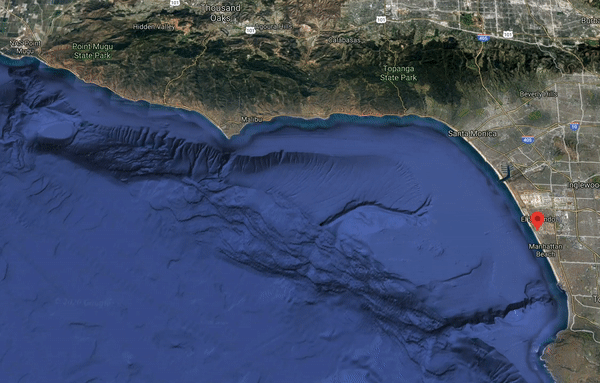
The waves that we see coming into the shore here in California actually begin hundreds or thousands of miles away in ocean storms. LMU Oceanography Professor and longtime surfer John Dorsey says one of the most important things for his students to learn is that “big storms form big waves…the bigger the storm, the further away it is, the bigger the surf that will eventually reach the coast.”
After the storm occurs, the waves are pushed out in different directions, toward the coasts. The term “swell” refers to these pushes of big waves. The swell caused by a storm from south of New Zealand can reach the California coast within a week.
Our biggest waves here in Southern California, particularly Los Angeles, come from large storm systems which occur in the Western Pacific, usually off the coast of Japan or Russia’s Kamchatka Peninsula. The waves from these storms then travel across the Northern Pacific, eventually reaching the California coast.
And since these swells come from different directions, beaches are affected differently depending on which way they’re facing. For example, Malibu will have good waves from a New Zealand (south) swell, which travels north and hits the city’s south-facing beaches. Whereas El Porto in Manhattan Beach does better with a northwest swell coming from near Japan or the Kamchatka Peninsula.
The shape of the bottom floor of the ocean also has an effect on how waves behave – on both a large and small scale. For example, sandbars, little ridges that sit just a few minutes’ paddle offshore, affect where the waves will actually break.
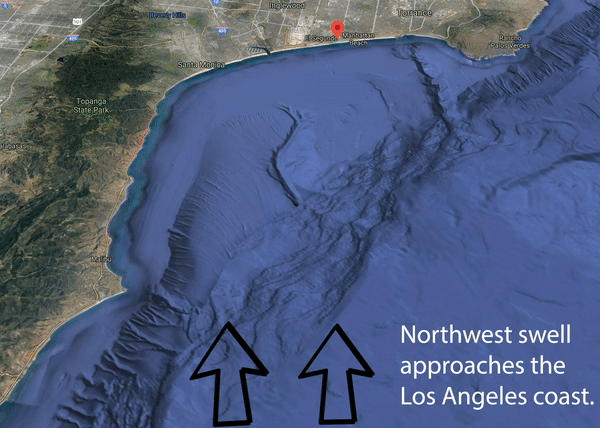
Imagine waves traveling from the deep ocean at high speed and then hitting a bump in the ocean floor. The energy in the water has no choice but to lurch up and forward. And because the water molecules are already moving in a circular motion, that can cause a tube-like formation. While the water is already moving in a circular motion, it’s now being forced to displace itself upwards and over when it hits a sandbar or a reef, creating waves.
The ocean’s bottom topography can affect waves on a bigger scale through refraction, or bending. Refraction is the primary reason that such good waves are particularly concentrated in El Porto.
About 7 miles offshore from the Los Angeles coast, the ocean floor dips off into a deep canyon. So when waves approach the shore from a few miles out, they hit a rising shelf of land which rests between two canyons. While some of this wave energy dissipates into the deep canyons, some of it does make it up onto the elevated space on the shelf, becoming concentrated and funneling directly into the sweet spot right at El Porto, as demonstrated in the Google map graphic above.
ANATOMY OF A WAVE
Now that we've covered waves scientifically, what does the anatomy of a wave look like when you're surfing it?
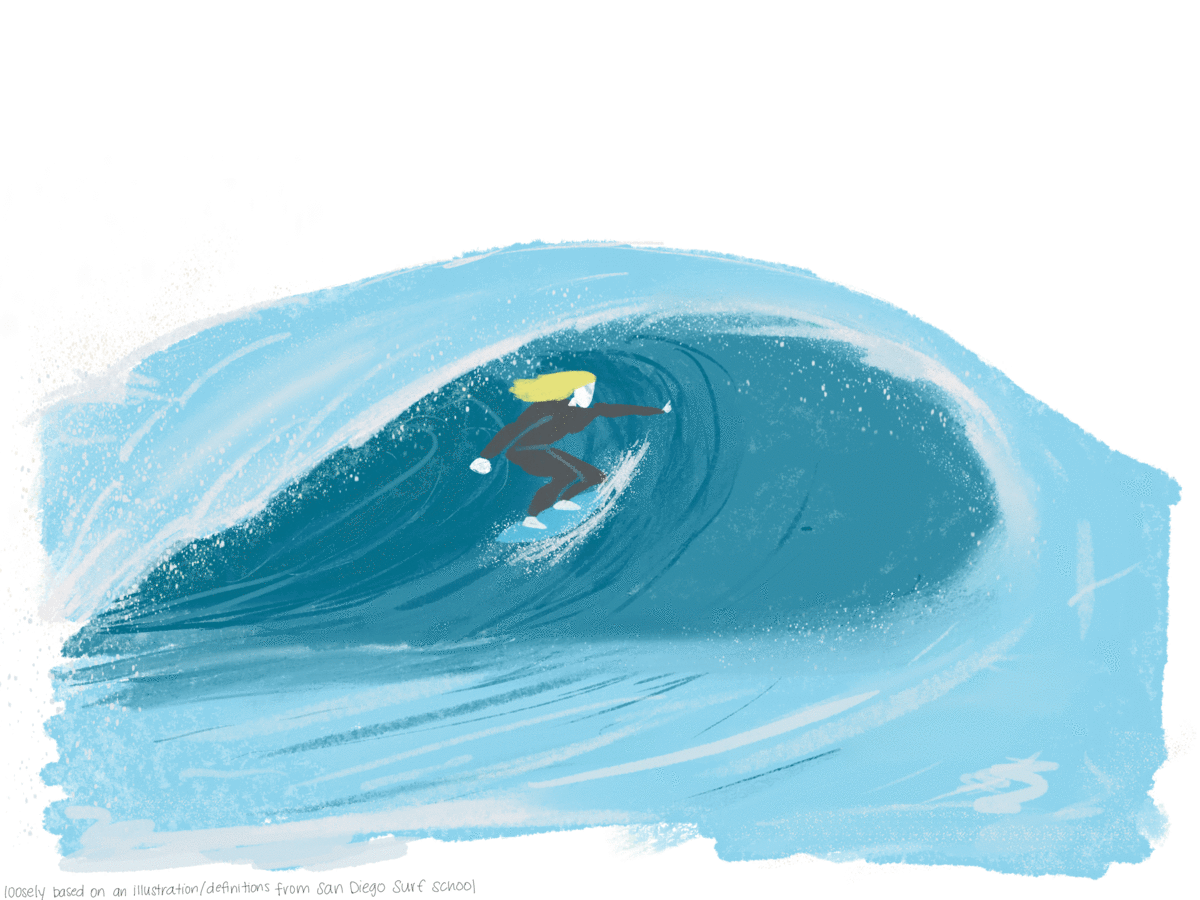
PHYSICS OF SURFING
What it’s like catching a wave?
“You have basically a swimming pool coming, heaving over your head, and you’re trying to paddle and match your… speed with this thing and ride down it, turn, get into it,” explains physicist and avid surfer Garrett Lisi.
There are many factors involved in the physics of surfing – buoyancy, force, gravity, mass, acceleration, torque and more. To keep it simple, we’ll briefly go over buoyancy, the science behind dropping in, and a surfer’s ability to turn through torque.
A surfboard floats because of its lower density in relation to the water it sits in; a surfboard is buoyant. Buoyancy is the combination of two forces at play: upward pressure from the water and downward pull from gravity. Because the surfboard’s material (foam core) is less dense than the water, the upward pressure from the water below “overpowers gravity” and keeps the board from sinking, according to Jonathan Trinastic, a scientist with a Ph.D. in physics.
Matching speed, catching the wave and riding down it—this is known as “dropping in,” and perhaps no one knows the science of dropping in quite like David Sandwell. He’s an active surfer and professor of geophysics at the Scripps Institute of Oceanography at UC San Diego. In his freshman seminar, Physics of Surfing, he tells his students all about dropping in and related velocity.
Sandwell is able to calculate the average speed of a surfer going down a wave, using factors like gravity and wave height. A longboarder on a five-foot wave rides at about 15 miles per hour. A daredevil on a 75-foot tow-in wave reaches speeds of almost 60 miles per hour.
Surfers in what Sandwell terms a “fun wave,” about 15 feet high, will be going about 18 miles per hour. He thinks this is what we might see in next summer’s Olympics at Tsurigasaki Beach, if conditions are right.
Sandwell’s graph below shows the differing speeds of waves at varying heights. To get into the wave, a surfer has to paddle about the same speed of the wave, or if not that fast, maybe a bit slower to get into the wave, since sometimes the wave itself can assist with momentum and launching the surfer into it. For a wave going 10 miles an hour, a surfer has to paddle about that same speed to catch it. As demonstrated in the graphic below, in “bigger waves you have to paddle [much] faster than smaller waves” in order to match the increase in speed.
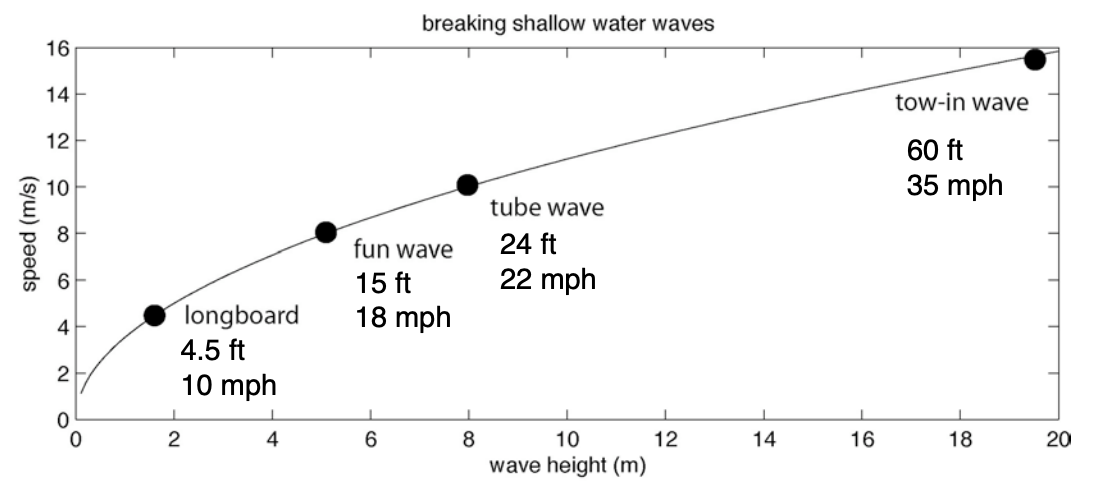
From Dr. David Sandwell's Physics of Surfing lecture notes on "Energetics of a Surfer" at UC San Diego. For the full lecture notes, click here.
Paddling into waves can become a problem when monster waves, as seen on the right end of the graph, begin to reach speeds of about 35 miles per hour. That’s where jet skis become necessary for surfers to get towed into the waves – especially somewhere like Nazaré in Portugal, where waves can reach 100 feet tall.
Once in the wave, Sandwell explains, “The way you gain speed is to surf at the part of the wave that is the steepest. You want the slope of the wave to be as big as possible, and then you can exchange potential energy for more kinetic energy. In other words, height change for speed change.”
Meaning, if you’re looking to gain speed, you might backtrack back up the face of the wave. If you’re looking to slow down, going forward and down all the way to the bottom or the front of the wave and doing a big turn would be your best bet. It seems counterintuitive, going backward to increase speed and forward to decrease, but the top of the wave is where there’s maximum potential energy.
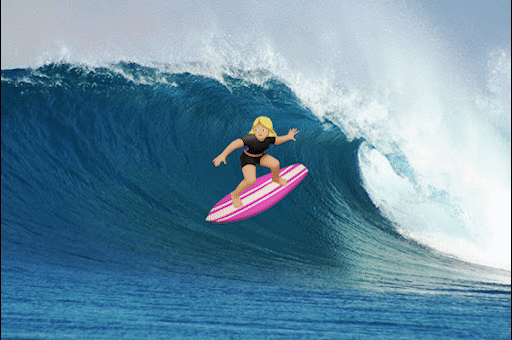
Photo: Malole Surf House
In order to move around on the wave, surfers must apply torque by shifting their bodies in the direction they want to move. Trinastic explains, “A surfer is constantly battling attacking and fleeting torques because of the chaotic motion of waves pushing the surfboard from all sides. To counter these, the surfer must learn to apply her weight in particular directions and locations to create torque in the opposite direction as that of the waves, to (generally) cancel out the rotational forces.”
The concept of inertia comes into play when understanding why professional surfers choose short, nimble boards for their competitions. Trinastic defines inertia as “how difficult it is to change something’s motions once it has started moving.”
In the case of longboards, they have “a lot more mass far from the axis of rotation of the board, and this creates much more inertia to resist a change in direction that a surfer is trying to make.” When a surfboard is big, it’s going to resist movement applied through torque (shift in bodyweight), which is why surfers in search of speed and maneuverability will always go for a shortboard.
What might seem like an anomaly though is that longboards can actually travel faster than shorter boards: although “longboards may not be as nimble, they reach higher speeds than short boards, mainly because their larger surface provides more area for water to push the surfer along.”
All of these scientific factors that make up the process of catching a wave – buoyancy, velocity and torque – are put into play and most accurately mastered by surfing’s best athletes, who might be unaware of the complex physics behind their routine movements.